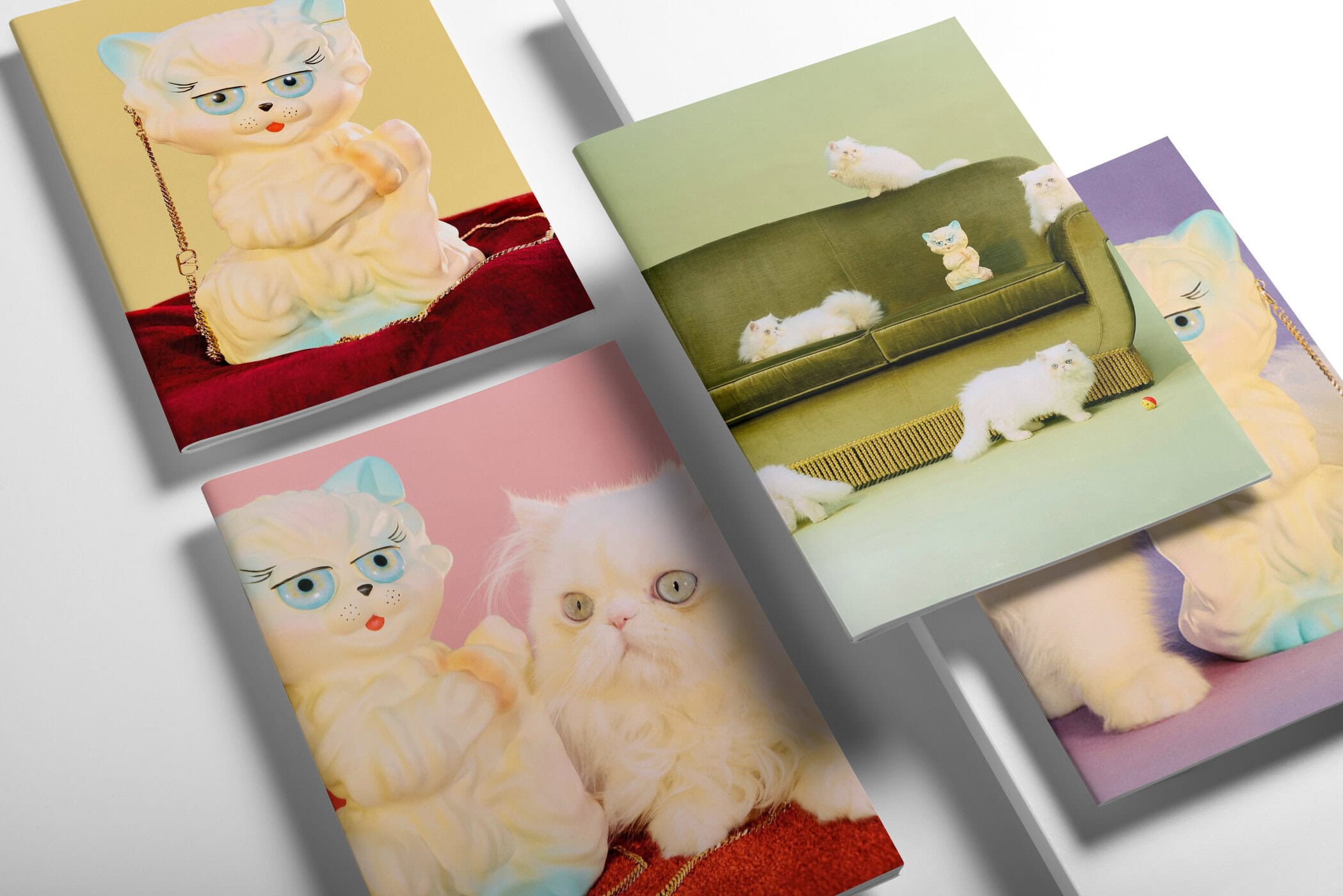Valentino’s Quietly Clever Cat Campaign Is a Case Study in Modern Luxury Marketing
By Mackenzie Richard Zuckerman
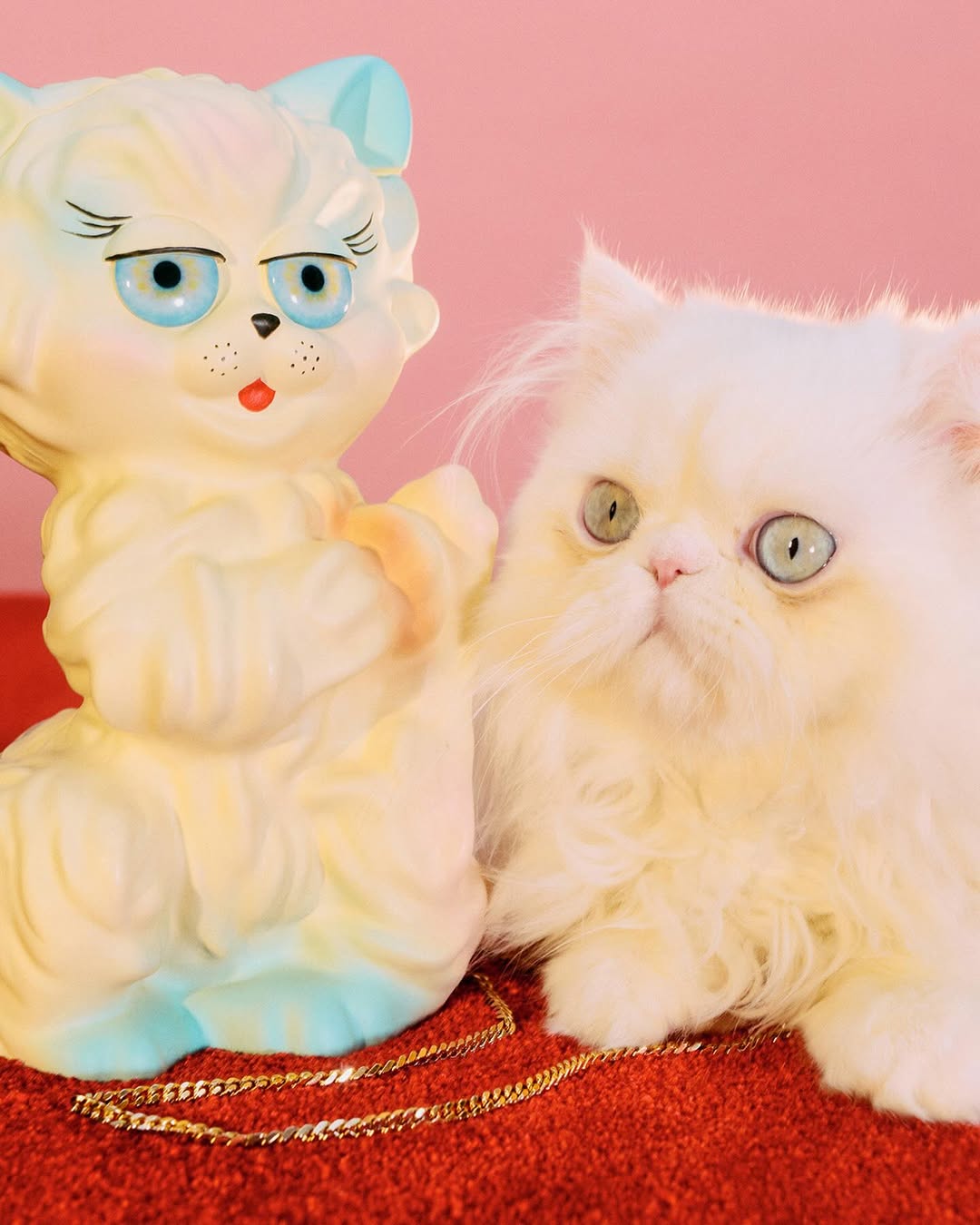
If the fashion world has proven anything in recent years, it’s that even the most storied houses aren’t afraid to have a little fun—especially when that fun is algorithm-friendly. Valentino’s latest digital marketing play is a purring case in point.
To accompany the launch of its new Le Chat de la Maison minaudière—a feline-shaped accessory priced at $5,800—the house quietly debuted a mini digital campaign starring the bag itself. Or rather, its larger-than-life alter ego. Seen peeking around the corner of the Madison Avenue flagship, looming playfully from rooftops, or nestled among a velvet sofa of real cats, “Le Chat” has become a full-blown character.
Split between surreal slow-motion Instagram animations and stylized photography, the campaign is both charming and deliberate. In one video, the cat bag glides across the sidewalk with street sounds in the background, creating a lo-fi cinematic mood. In another, it gazes out of a second-floor Valentino window in Paris like a feline fashion deity.
The result? A subtle, self-aware marketing moment that feels designed for social media while still rooted in Valentino’s world of fantasy and couture eccentricity.
This is a new direction for the brand. Under Pierpaolo Piccioli, Valentino was revered for its romanticism and gravitas. Under Alessandro Michele, we’re beginning to see something more playful—and more digitally attuned. Le Chat is not just a product, it’s a persona: part collector’s item, part memeable mascot.
In its styling, the campaign draws gentle comparisons to recent digital storytelling by brands like Jacquemus, Hermès, and Tory Burch—fashion houses that have embraced surreal minimalism, whimsy, and internet-native charm to connect with younger audiences. But Valentino’s take feels distinct. There’s no loud narration, no maximalist gimmick. Just a sleepy-eyed cat blinking at passersby, calmly taking up space in the city’s most refined addresses.
Whether this is a one-off or the start of a more animated brand personality remains to be seen. But what’s clear is that Valentino is experimenting. Not to overwhelm, but to delight. Not to scream, but to playfully gesture.
As luxury marketing becomes ever more saturated, campaigns like Le Chat prove that the most powerful moves are sometimes the quietest. Or in this case, the most curiously cat-like.
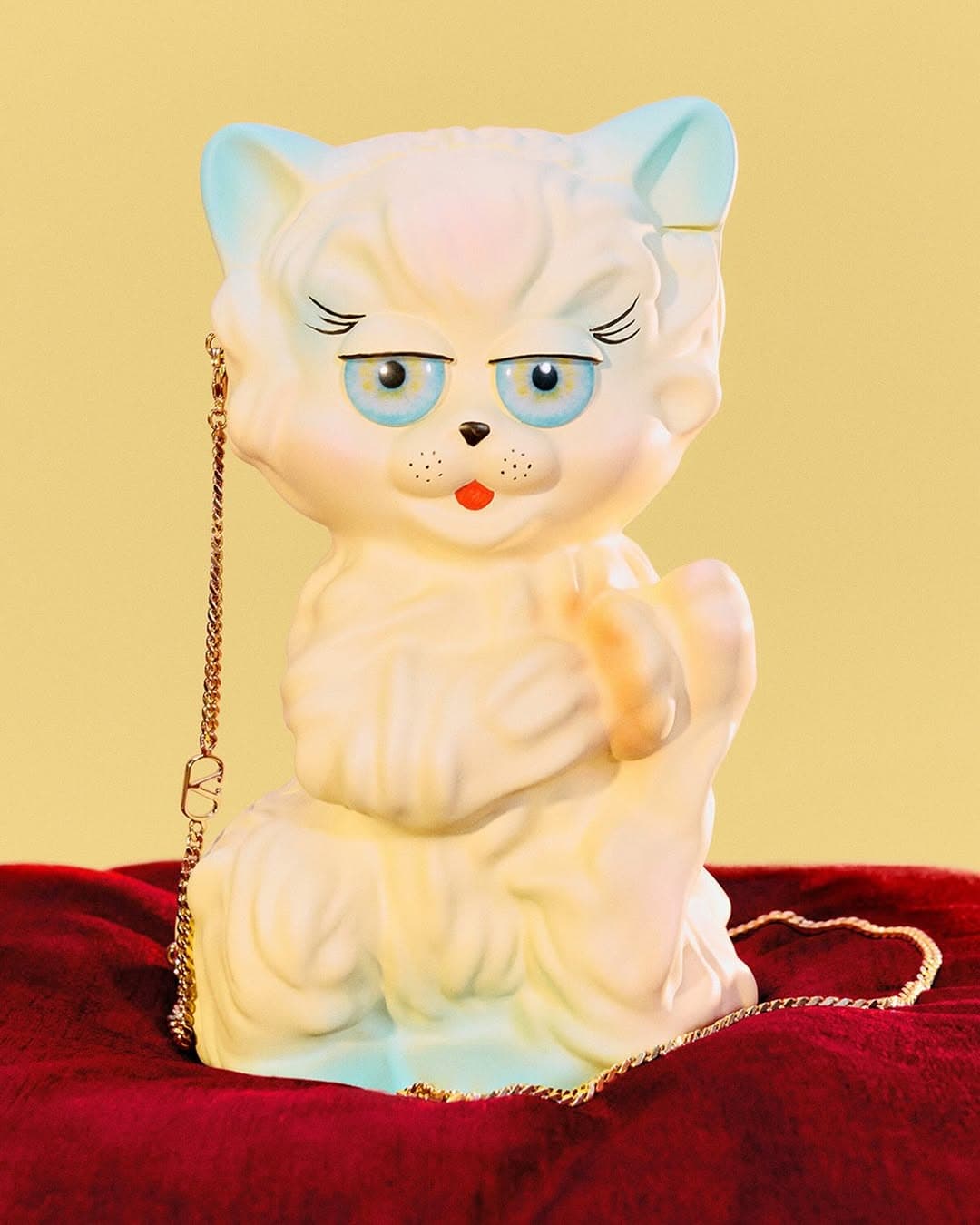
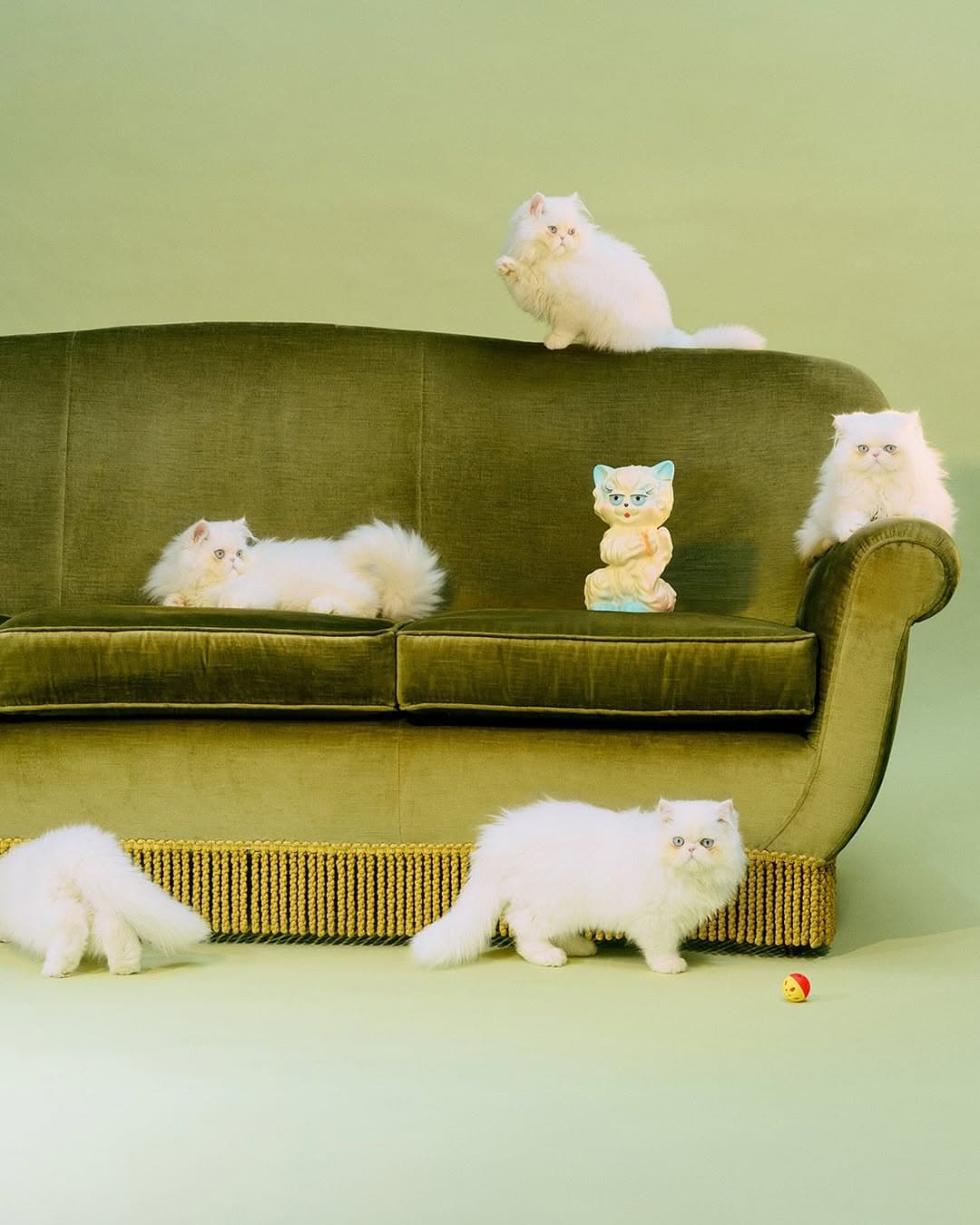
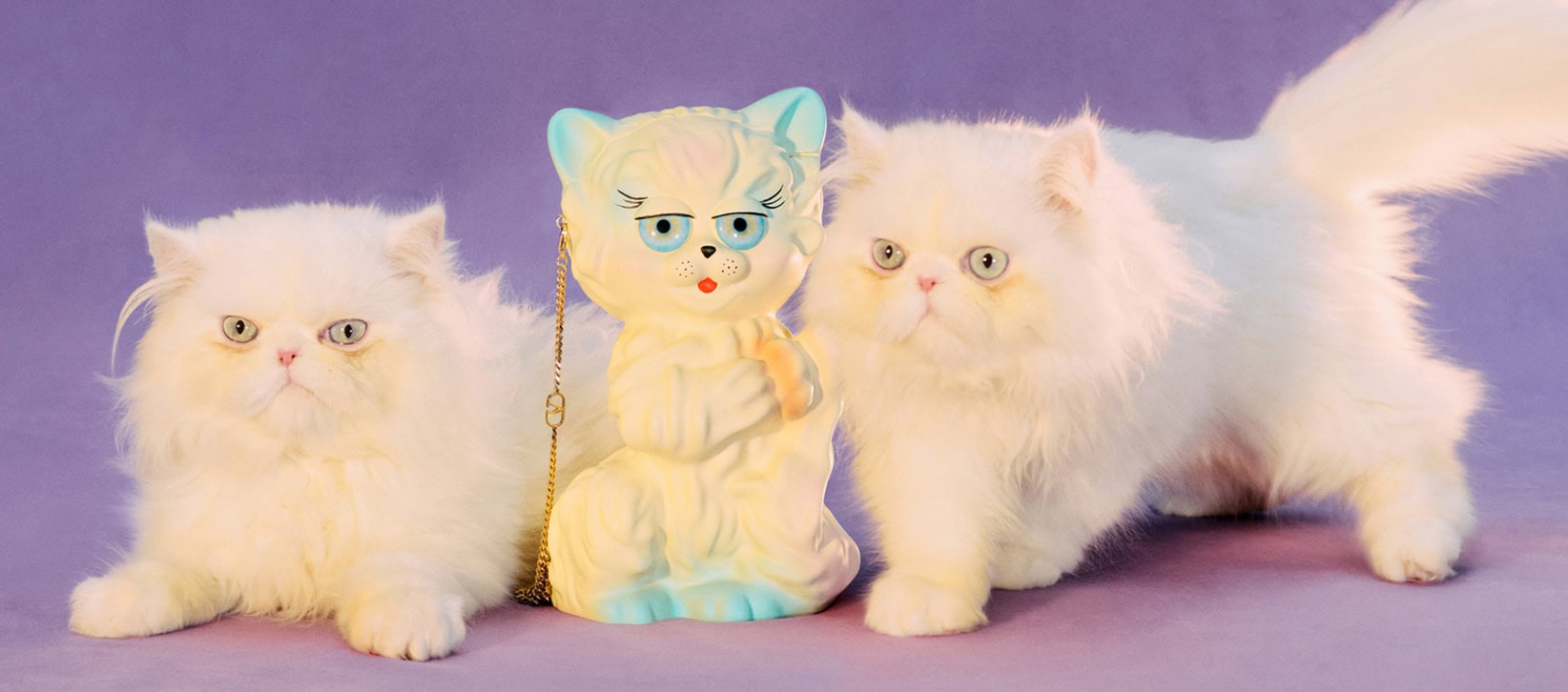
Key Takeaways
Character-led storytelling is the new brand language.
Valentino’s choice to position the Le Chat minaudière not just as a product, but as a persona, reflects a growing trend: brands that animate their objects build deeper emotional resonance—and higher shareability.
Whimsy works—especially when it’s quiet.
Unlike flashy campaigns, this rollout proves that subtle, surreal charm can cut through the noise. A sleepy cat blinking from a Paris storefront window says more than a high-budget campaign might.
Emotionally expressive objects invite collectibility.
By making the bag a character with attitude and presence, Valentino blurs the line between couture and concept art. It’s not just a bag—it’s a moment, and consumers buy into the moment.
Digital-first doesn’t have to mean digital overload.
With just a handful of Instagram videos and no major press push, Valentino shows that fewer, better assets can make a sharper impression than volume-based digital campaigns.
Playfulness is becoming a luxury language.
In step with Jacquemus, Hermès, and Tory Burch, Valentino’s campaign signals that even heritage houses are experimenting with levity—without sacrificing elegance or brand equity.
Alessandro Michele’s impact is visible.
This campaign marks a decisive break from Pierpaolo Piccioli’s poetic romanticism. It hints at a new Valentino: still refined, but with a wink. Watch this shift closely—it may redefine how other maisons approach “serious” luxury.
